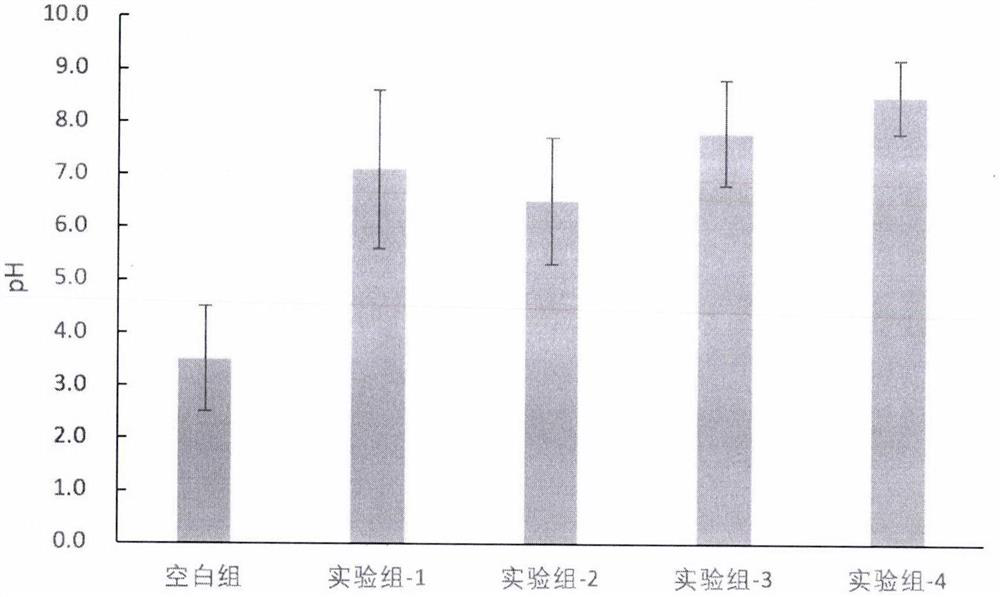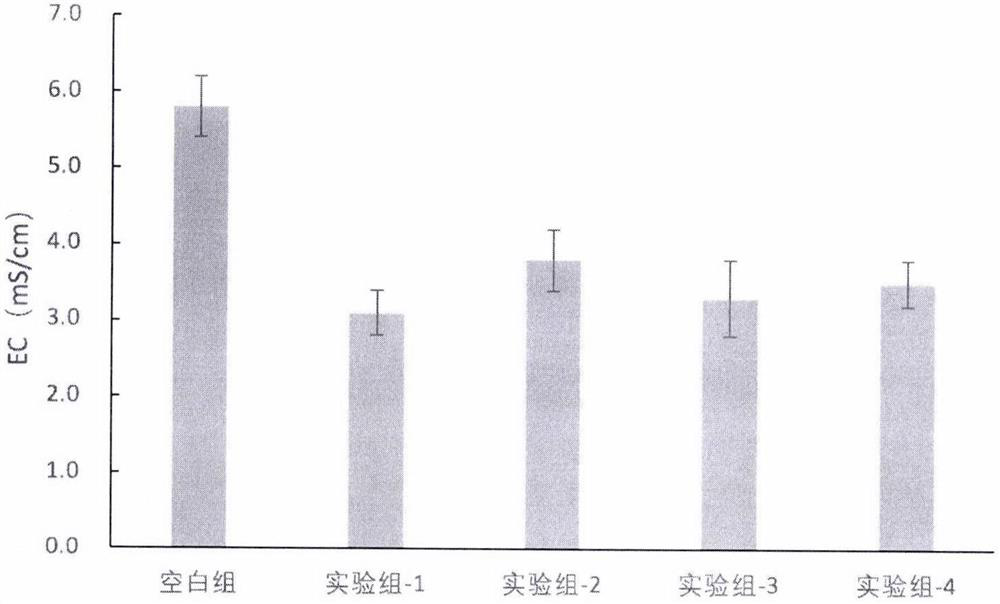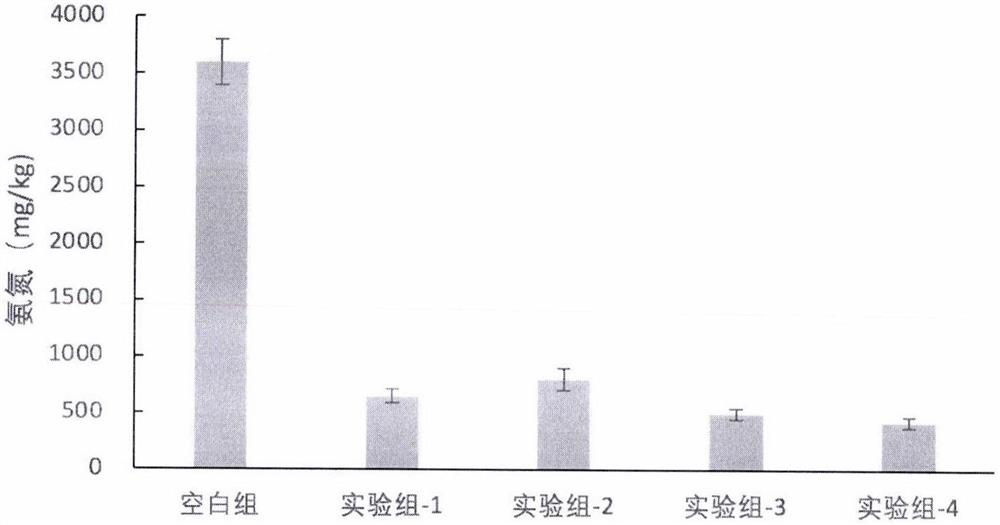Combination method of compound microbial agent for degrading kitchen garbage
A technology of compound microbial inoculum and kitchen waste, applied in the field of combination of compound microbial inoculants, can solve the problems of difficult secondary pollution control, long composting time, poor product quality, etc. The effect of the rotting process
- Summary
- Abstract
- Description
- Claims
- Application Information
AI Technical Summary
Problems solved by technology
Method used
Image
Examples
Embodiment 1
[0040] (1) Composite microbial agent degrades kitchen waste
[0041] Take pretreated kitchen waste 15kg, add sawdust 3kg, adjust moisture content to 68%, C / N ratio to 25, add 5% composite microbial bacterial agent (experimental group-1), the Bacillus subtilis, The volume ratios of streptomyces, yeast, actinomycetes, lactic acid bacteria, pseudomonas, microbacteria, rhizopus oryzae, cellulomonas and aspergillus are 1:1:1:1:1:0:0: 0:0:0, then add 0.75mol MgO and 1.25mol K 2 HPO 4 . The control group only added sawdust without any fungicide. Both the experimental group and the control group were treated for 45 days.
[0042] (2) Detection of pH, EC, GI and ammonia nitrogen
[0043] Sample pH measurement: Weigh 10 g of the sample, add 100 mL of distilled water, shake on a shaker at 150 rpm for 1 h, and let stand for 30 min. The supernatant was centrifuged at 6,000 rpm for 10 min, and the supernatant was measured at room temperature using a pH meter and recorded.
[0044] Sa...
Embodiment 2
[0049] (1) Composite microbial agent degrades kitchen waste
[0050] Weigh 17kg of pretreated kitchen waste, add 3.5kg of sawdust, adjust the water content to 62%, and the C / N ratio to 28, add 10% of the composite microbial agent (experimental group-2), and the Bacillus subtilis formed by it , Streptomyces, Saccharomyces, Actinomycetes, Lactic Acid Bacteria, Pseudomonas, Microbacterium, Rhizopus oryzae, Cellulomonas and Aspergillus are respectively 0:0:0:0:0:1:1 : 1:1:1, then add 1mol MgO and 3mol K 2 HPO 4 . The control group only added sawdust without any fungicide. Both the experimental group and the control group were treated for 45 days.
[0051] (2) Detection of pH, EC, GI and ammonia nitrogen
[0052] Adopt the method identical with embodiment 1 to measure.
[0053] The result is as Figure 1-4 As shown, after 45 days of bacterial agent treatment, the pH increased from 3.5 to 6.5, the EC decreased from 5.8 to 3.8, the ammonia nitrogen decreased from 3600 to 805, ...
Embodiment 3
[0055] (1) Composite microbial agent degrades kitchen waste
[0056] Take pretreated kitchen waste 20kg, add sawdust 5kg, adjust moisture content to 56%, C / N ratio to 30, add 8% composite microbial bacterial agent (experimental group-3), the bacillus subtilis, The volume ratio of streptomyces, yeast, actinomycetes, lactic acid bacteria, pseudomonas, microbacteria, rhizopus oryzae, cellulomonas and aspergillus is 2:2:2:2:2:1:1: 1:1:1, then add 0.6mol MgO and 1.5mol K 2 HPO 4 . The control group only added sawdust without any fungicide. Both the experimental group and the control group were treated for 45 days.
[0057] (2) Detection of pH, EC, GI and ammonia nitrogen
[0058] Adopt the method identical with embodiment 1 to measure.
[0059] The result is as Figure 1-4 As shown, after 45 days of microbial treatment, the pH increased from 3.5 to 7.8, the EC decreased from 5.8 to 3.3, the ammonia nitrogen decreased from 3600 to 495, and the GI increased from 15% to 92%. Co...
PUM
| Property | Measurement | Unit |
|---|---|---|
| Volume | aaaaa | aaaaa |
Abstract
Description
Claims
Application Information
 Login to View More
Login to View More - R&D
- Intellectual Property
- Life Sciences
- Materials
- Tech Scout
- Unparalleled Data Quality
- Higher Quality Content
- 60% Fewer Hallucinations
Browse by: Latest US Patents, China's latest patents, Technical Efficacy Thesaurus, Application Domain, Technology Topic, Popular Technical Reports.
© 2025 PatSnap. All rights reserved.Legal|Privacy policy|Modern Slavery Act Transparency Statement|Sitemap|About US| Contact US: help@patsnap.com



